The Clippers‘ dual acquisitions of Kawhi Leonard and Paul George during the 2019 offseason were supposed to make the franchise a perennial championship contender. And the team has entered virtually every training camp since then with title aspirations.
But the injury bug remains undefeated against this iteration of the Clippers. Neither Leonard nor George has played more than 57 games in a season since arriving in Los Angeles, and both players have missed crucial playoff games due to health issues.
Could this year’s Clippers have made a deep postseason run with a fully healthy roster? Maybe not. But it’s frustrating that we’ll never know for sure, since Leonard was sidelined two games into the first round due to a torn meniscus and George wasn’t able to suit up at all due to a knee injury of his own.
When Michael Winger, who left the Clippers this week after serving as the team’s general manager for the last six years, gave his first media interview after being hired by the Wizards, he said he still believes to his “core” that a team led by Leonard and George can win a championship if those two forwards stay healthy. There’s no indication that the rest of L.A.’s front office doesn’t share that view, which means there’s no reason to expect the team to break up the star duo this offseason.
Leonard and George are now both on the wrong side of 30, and the NBA’s new Collective Bargaining Agreement will make it more difficult than ever for the league’s biggest-spending teams to fortify their rosters. The Clippers’ task this offseason will be to determine how best to capitalize on a championship window that may not be open for much longer.
The Clippers’ Offseason Plan
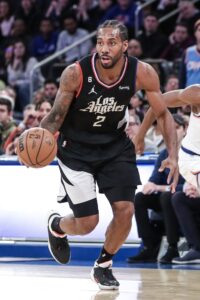 If we assume Leonard and George aren’t going anywhere, which seems like a relatively safe bet, the question this summer is how the Clippers will improve the roster around them.
If we assume Leonard and George aren’t going anywhere, which seems like a relatively safe bet, the question this summer is how the Clippers will improve the roster around them.
Free agency likely won’t be a viable path. While it remains unclear just how many of the rules related to the new second tax apron will go into effect in 2023/24, it sounds like teams above that second apron likely won’t have access to the taxpayer mid-level exception this offseason. Sign-and-trades also aren’t an option for taxpayers, so the Clippers would be limited to the minimum salary exception on the free agent market.
That doesn’t mean they won’t be able to add a rotation player in free agency — there may be a productive veteran or two who wants to chase a title in Los Angeles and who would be willing to sign for the minimum. But that’s not something the Clippers can necessarily count on.
The draft probably won’t be a realistic avenue for roster upgrades either. The Clippers do have a first-round pick, but due to a swap, they own Milwaukee’s first-rounder rather than their own, so they’re picking at No. 30. It’s not impossible to find a quality rotation player, or even a future impact player, at that spot — just ask Jimmy Butler, Desmond Bane, Josh Hart, Kyle Anderson, and Kevon Looney. But it’s rare for a 30th overall pick to provide useful minutes as a rookie to a team with title aspirations.
That leaves the trade market, which is the Clippers’ best hope of meaningfully upgrading – or at least balancing – their roster this offseason. Six of the 10 L.A. players who have guaranteed salaries for 2023/24 are earning between $10.5MM and $18MM, making them ideal matching pieces. And while not all of those players are expendable, there’s certainly some positional overlap in the group, so the Clippers could afford to sacrifice a little depth in a deal for the right player.
Nicolas Batum and Robert Covington, both of whom will earn $11.7MM on expiring contracts next season, look like potential trade candidates. Batum’s playing time fluctuated over the course of the season, while Covington fell out of the rotation entirely for much of the year.
Marcus Morris ($18MM) is another player whose role was cut back down the stretch — he started 65 regular season games for the Clippers, but didn’t play at all during the last nine games of the regular season or the first two games of the playoffs.
The Clippers are unlikely to trade all three forwards, but it appears there aren’t enough minutes to go around for all of them, especially when Leonard and George are available.
What will the Clippers be looking for on the trade market? A play-making point guard who can knock down an outside shot would make sense with this roster. However, given the modest appeal of veterans like Morris, Batum, and Covington and the team’s lack of movable draft assets, the front office will have to keep its expectations in check. The Clippers aren’t a team that could realistically make a play for Damian Lillard, for instance.
A reunion with Chris Paul would be possible if the Clips want to pursue it — they have the sort of tradable players who should appeal to Phoenix, and the Suns’ asking price for Paul probably won’t be substantial. But adding CP3 to this group would make the Clippers even more susceptible to the injury bug. Spencer Dinwiddie, Kyle Lowry, and Terry Rozier are among the other veteran guards who would likely be within reach for L.A.
An upgrade at the center spot may also be something the Clippers explore on the trade market, but the team likes Ivica Zubac, and Mason Plumlee was a nice fit after being acquired at the trade deadline. The only issue is that Plumlee is a free agent — re-signing him to a market-value deal will push the Clippers’ tax bill higher and its team salary further over that second apron. It may be worth it though, especially if many of the restrictions on apron teams don’t go into effect for another year. If Plumlee walks, they’ll need to find a reliable big man to back up Zubac.
Los Angeles will also have to make a decision on Eric Gordon, whose $20.9MM salary for 2023/24 is non-guaranteed. Given the Clippers’ salary situation and Gordon’s age and declining usage, it may not be prudent to retain him at that price, but it’s not as simple as waiving him and re-signing him at a lower figure. The club would lose any form of Bird rights on Gordon if he’s cut, potentially ending the relationship unless he’s willing to accept a minimum-salary deal, which seems unlikely.
The Clippers are essentially in that situation now with Russell Westbrook, who played well after signing with the team on the buyout market. Because Westbrook signed a minimum-salary deal and L.A. only has his Non-Bird rights, the team can’t offer him a salary worth more than 20% above the minimum. There will almost certainly be bidders willing to offer more than that, so unless Westbrook is open to taking a discount to stick around, his days as a Clipper may be over.
Of course, while fortifying the roster is a priority in the short term, the Clippers can’t take their eyes off the future, which brings us back to the two star forwards. Leonard and George are both eligible for extensions this offseason and will be able to reach free agency in 2024 if they don’t sign new deals before then.
On one hand, if they don’t offer extensions to Leonard and George, the Clippers run the risk of alienating their two best players and could be setting themselves up to lose one or both of them for nothing a year from now. On the other hand, locking up Leonard and George to massive new long-term contracts that run through their mid-30s feels a bit reckless, given their respective injury histories.
It will be fascinating to see how the Clippers approach those contract discussions. For what it’s worth, both Leonard and George are Los Angeles natives who joined the Clippers in large part because they wanted to be back home, so they don’t fit the profile of stars who would be quick to seek a change of scenery if extension talks don’t go as planned this summer.
Salary Cap Situation
Guaranteed Salary
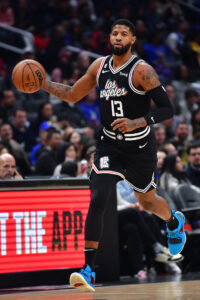 Paul George ($45,640,084)
Paul George ($45,640,084)- Kawhi Leonard ($45,640,084)
- Norman Powell ($18,000,000)
- Marcus Morris ($17,116,279)
- Nicolas Batum ($11,710,818)
- Robert Covington ($11,692,308)
- Ivica Zubac ($10,933,333)
- Terance Mann ($10,576,923)
- Amir Coffey ($3,666,667)
- Bones Hyland ($2,306,400)
- Total: $177,282,896
Dead/Retained Salary
Player Options
Team Options
Non-Guaranteed Salary
- Eric Gordon ($20,917,902)
- Gordon’s salary would become fully guaranteed if he’s not waived on or before June 28.
- Brandon Boston Jr. ($1,836,096)
- Boston’s salary would become fully guaranteed if he’s not waived on or before June 30.
- Jason Preston ($1,836,096)
- Preston’s salary would become fully guaranteed if he’s not waived on or before July 2.
- Total: $24,590,094
Restricted Free Agents
Two-Way Free Agents
Draft Picks
- No. 30 overall ($2,377,560)
- No. 48 overall (no cap hold)
- Total: $2,377,560
Extension-Eligible Players
- Brandon Boston Jr. (veteran)
- Paul George (veteran)
- Eric Gordon (veteran)
- Terance Mann (veteran)
- Marcus Morris (veteran)
- Mason Plumlee (veteran)
- Jason Preston (veteran)
Note: These are players who are either already eligible for an extension or will become eligible before the 2023/24 season begins. Plumlee is only eligible until June 30.
Unrestricted Free Agents / Other Cap Holds
Note: The cap hold for Hood remains on the Clippers’ books from a prior season because it hasn’t been renounced. He can’t be used in a sign-and-trade deal.
Cap Exceptions Available
- Taxpayer mid-level exception: $5,000,000
- Trade exception: $2,134,843
Note: The Clippers may not have access to any form of mid-level exception next season if certain new rules related to the second tax apron go into effect immediately.
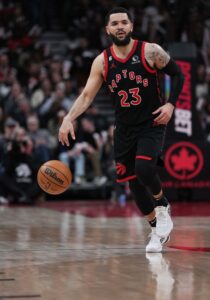
 If we assume Leonard and George aren’t going anywhere, which seems like a relatively safe bet, the question this summer is how the Clippers will improve the roster around them.
If we assume Leonard and George aren’t going anywhere, which seems like a relatively safe bet, the question this summer is how the Clippers will improve the roster around them.
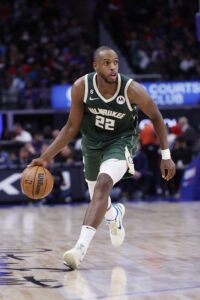 The first order of business for Milwaukee this offseason has reportedly already been decided — Raptors assistant Adrian Griffin will be the
The first order of business for Milwaukee this offseason has reportedly already been decided — Raptors assistant Adrian Griffin will be the 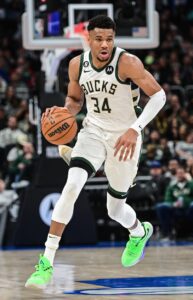 Giannis Antetokounmpo
Giannis Antetokounmpo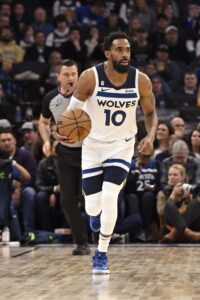 June 24
June 24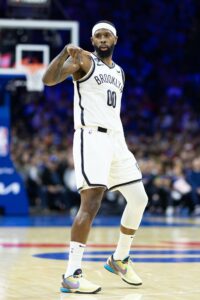 July 10
July 10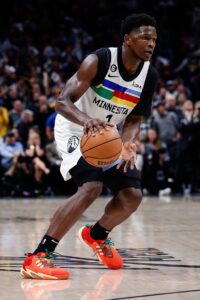 Minnesota is faced with a lot of difficult questions this offseason. The most prominent is whether or not the pairing of Gobert and Towns can ultimately lead to a championship when they’re taking up such a huge portion of the payroll, especially when it’s clear the future hinges on the evolution of
Minnesota is faced with a lot of difficult questions this offseason. The most prominent is whether or not the pairing of Gobert and Towns can ultimately lead to a championship when they’re taking up such a huge portion of the payroll, especially when it’s clear the future hinges on the evolution of 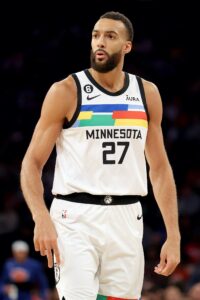 Rudy Gobert
Rudy Gobert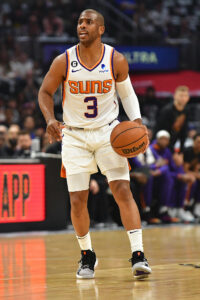 Here’s a practical example:
Here’s a practical example: